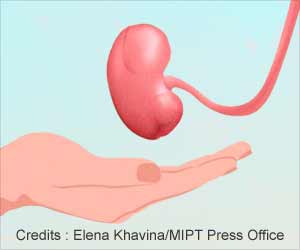Face transplantation may be same as organ transplantation, but families of facial transplant donors face a tough time due to unique problems related to the donor's identity.

‘Families of facial transplant donors are more likely to experience a tough time due to the unique issues related to the donor's identity.’
Read More..




Anthony Verfaillie, MD, Kim De Corte, PhD, and colleagues of the University Hospital Ghent, Belgium, report an "interpretive phenomenological analysis" of the experience of family members of the deceased tissue donor for Belgium's first facial transplant. "The findings of our study help to better support donor families through the facial donation process and to improve facial transplantation procedures," the authors write. Read More..
Analysis Identifies Key Themes in Experiences of Facial Transplant Donors' Families
To gain insights into how family members are affected by the complex process of facial transplantation, the researchers interviewed the parents and a sibling of the deceased facial transplant donor. Analysis of the interviews identified six key themes:- Contrasts between facial and organ transplants: While at first they were surprised by the donation request, family members came to believe that facial transplantation was ‘equal’ to other more common types of organ transplants. However, there were unique considerations related to the perceptibility of the face and its importance as an aspect of personal identity. The family felt some pressure in the decision-making process, reflecting the perceived medical and scientific importance of the facial transplant.
- Consenting to facial donation: The family members ‘were on the same page’ regarding the decision to donate, influenced by their values of social engagement and altruism. They felt that the transplant would not only enable the donor to help others after death, but would also allow some part of their loved ones to live on.
- Expectations toward the transplant recipient: Family members had varying feelings about the facial transplant recipient. They expressed a wish to see the results of the transplant – which they knew they could not do, due to legal/confidentiality issues. At the same time, they were also apprehensive about the prospect of recognizing their loved one's face on the recipient, even though they knew that wasn't possible.
- Feelings toward restoration of the donor's face: The family felt it was very important to be able to view the body of the deceased. This required restoration in the form of a manually fabricated silicon mask – which meant that the body couldn't be touched and "did not feel completely genuine." Family members also had to deal with some "bothersome" questions from some social contacts.
- Relationship with the medical team: Family members felt well-informed by the medical team and appreciated the ‘open, warm, humane, and respectful’ relationship with them. However, the family also felt conflicting emotions related to a broadcast report about the facial transplant – which they did not know about in advance, and which revealed some new information about the surgical procedure.
- Media attention: The family ‘did not feel completely prepared’ for media attention to the facial transplant procedure. A news leak of the planned procedure was an ‘unpleasant aspect’ of the donation process. Family members felt they could have been ‘better informed, prepared, and guided’ regarding the media attention and exposure.
Source-Eurekalert












